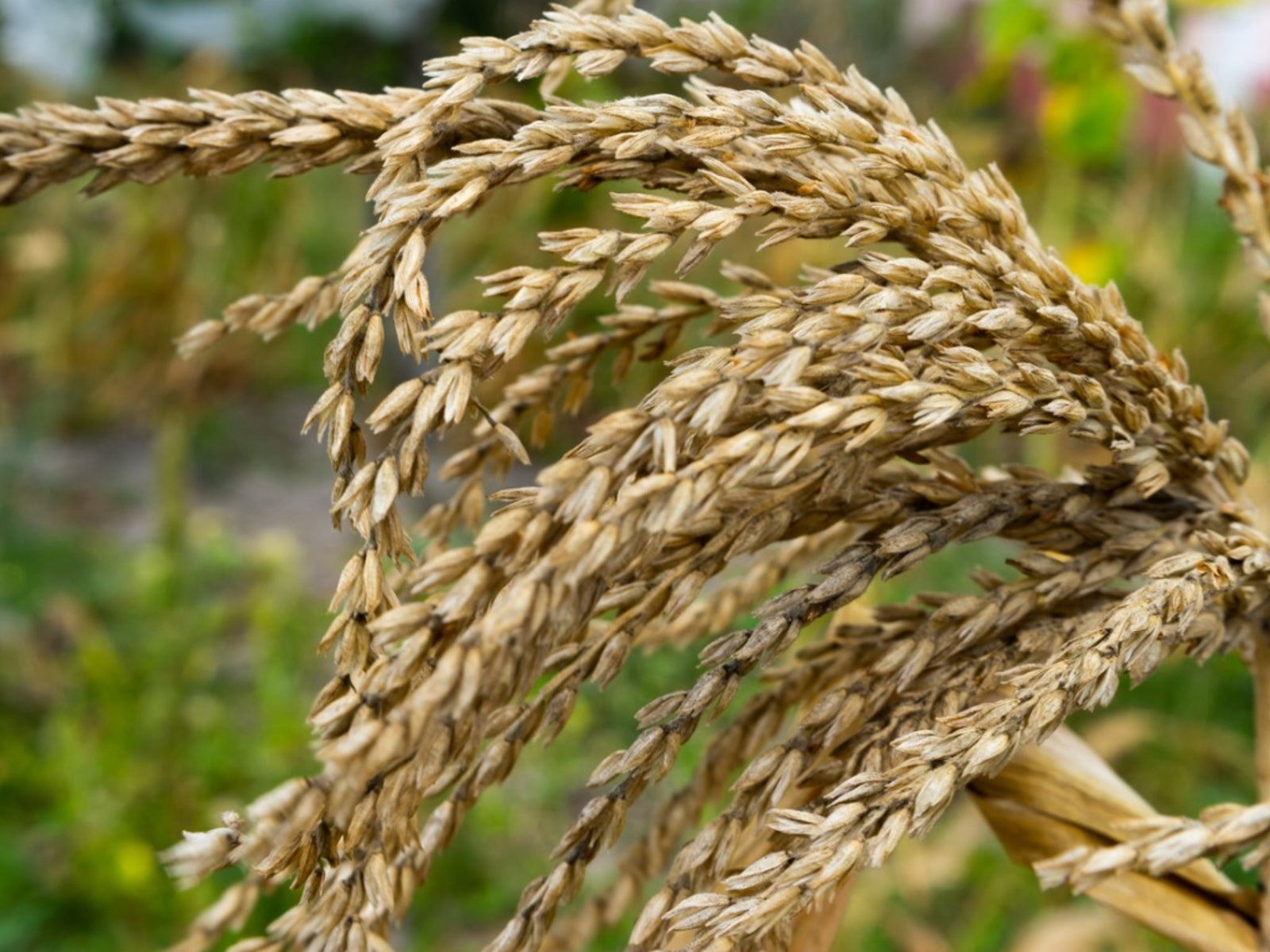Corn Pollination - How To Hand Pollinate Corn


How wonderful it would be to reap a bounty of corn if all we needed to do was drop the seeds in their little hole and watch them grow. Unfortunately for the home gardener, manual pollination of corn is almost a necessity. Even if your plot of corn is fairly large, learning how to hand pollinate corn can increase your yield and help prevent those sterile stalks that are often found along the edges of your planting. Before you learn about hand pollinating corn, it helps to know a little about the plant itself.
How Corn Pollination Happens
Corn (Zea mays) is actually a member of a family of annual grasses and while it doesn't produce showy petals, it does have both male and female flowers on each plant. The male flowers are called the tassel. That's the part that looks like grass gone to seed that blooms at the top of the stalk. As the tassel ripens, pollen is shed from the center spike downward to the lower fronds. The female parts of the stalk are the ears located at leaf junctions and the female flowers are the silks. Each strand of silk is connected to one kernel of corn. Pollination occurs when pollen touches the strand of silk. This seems like pollination should be easy. The pollen drifting down from the tassel should pollinate the ears below, right? Wrong! 97 percent of an ear's pollination comes from other plants, which is why it is important to know when and how to pollinate corn.
Timing for Hand Pollinating Corn
In larger fields, wind takes care of corn pollination. Between air circulation and stalks jostling one another in the wind, there is enough natural agitation to spread the pollen. In smaller garden plots, the gardener takes the place of the wind and the gardener needs to know when to do the job as well as how. To pollinate corn efficiently, wait until the tassels are fully open and beginning to shed the yellow pollen. This usually begins two to three days before silk emerges from the embryonic ears. As soon as the silk emerges, you're ready to begin the manual pollination of corn. Pollination will continue for another week under ideal conditions. Most pollen shedding occurs between 9 and 11 a.m., after the morning dew has dried. Cool, cloudy, or rainy weather can delay or inhibit pollination.
How to Hand Pollinate Corn
Timing is everything. Once you have the when, how to hand pollinate corn is a snap. Literally! Ideally, hand pollinating corn should be done in the morning, but many gardeners have bosses who object to taking time off for such endeavors, so early evening, before dew fall, is your best alternative. Snap the tassels off a few stalks and use them like feather dusters. Dust over the emerging silks at each ear. You'll be hand pollinating corn for about a week, so use your judgment as to how many tassels you snap per dusting. Start at the opposite ends of your rows each night to help equalize the distribution. That's it! You've successfully completed your manual pollination of corn. A relaxing stroll through the garden and a little light wrist action is all it takes. You'll be surprised at how relaxing hand pollinating corn can be. Sure beats a lot of other garden chores and the rewards will be well worth the time.
Gardening tips, videos, info and more delivered right to your inbox!
Sign up for the Gardening Know How newsletter today and receive a free copy of our e-book "How to Grow Delicious Tomatoes".

Jackie Rhoades began writing for Gardening Know How in 2010.
-
 Looking For Plants To Give You The Soft And Fuzzies? Try These 5 Fuzzy Leaf Plant Options
Looking For Plants To Give You The Soft And Fuzzies? Try These 5 Fuzzy Leaf Plant OptionsLovers of texture, drama, silver foliage and tactile plants will adore these special sensory garden additions. These fuzzy leaf plant options will leave you all aglow
By Susan Albert
-
 Get Ready For A Summer Of Hummers! Grow These Full Sun Hummingbird Plants and Flowers
Get Ready For A Summer Of Hummers! Grow These Full Sun Hummingbird Plants and FlowersIf you’re lucky enough to enjoy a sunny backyard, make sure you are maxing out on your pollinator opportunities and grow these full sun hummingbird plants and flowers
By Tonya Barnett